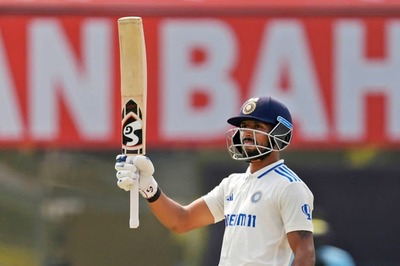
views
India’s rapidly growing urban population is characterized by an empowered citizenry, with rising incomes and aspirations. However, our cities mostly have fared poorly with respect to public service-delivery, urban infrastructure, and more importantly, urban governance. From providing reliable transportation to fixing roads, managing solid waste management, issuing documents, sanctioning building plans, billing and collecting utility charges, constructing adequate footpaths, maintaining open spaces and gardens, and ensuring breathable air—our city governments need to catch-up on every aspect of urban management. And among these issues, planning and development of peripheral areas for an ever-expanding city remains an acute challenge.
A more concerning trend is that this unplanned urbanization is rapidly expanding outwards, as the loci of urban growth has shifted away from the city core to the periphery. This shift in the focus of growth is accentuated by economic development of peripheral nodes, transportation network and diminishing land in the core of the city. This transition is often haphazard with sporadic development interventions carried out in the peripheral nodes. The conspicuous absence of metropolitan planning has failed to address the issue of inclusive development of fringe areas. As a result, fringe areas around the city experience extreme disparities in not only infrastructure, utilities and services delivered but also quality of life.
The term “metropolitan area” is defined clearly in the Constitution as an area having a population of over one million, consisting of two or more municipalities or panchayats or other contiguous areas that may span over multiple districts. Besides defining the metropolitan area, the 74th Constitutional Amendment has provided a framework for metropolitan planning and development aimed at infrastructure development, spatial planning, environmental conservation and sharing of resources.
Metropolitan areas play a crucial role in economic development by providing regional connectivity and competitiveness. Five metropolitan regions of Mumbai, Chennai, Bengaluru, Kolkata and Hyderabad together contribute 11 per cent to the GDP of the country. Mumbai and Bengaluru metropolitan regions contribute 35 per cent and 38 per cent to the respective state GDPs. With this ever-increasing economic footprint of the metropolitan region, there is hardly any visible governance structure to address the issues of metropolitan areas.
Pune city has recently expanded its municipal boundaries and 23 surrounding villages were merged into the municipal limits. With this merger, the area under Pune Municipal Corporation increased to 518.6 sq km. with an additional population of 5 lakh, making it the largest city (area wise) in Maharashtra. However, with minimal resources at its disposal, the civic administration will be stretched beyond the capacity even to provide basic services such as roads, water or electricity in these newly added semi-urbanized villages.
This approach of centralization and densifying existing cities is not just antithetical to the constitutional spirit but also overburdens existing cities with additional population and responsibilities. It is futile to take pride in becoming geographically largest city, if existing area and population are critically underserved and continue to remain poorly developed. To address these challenges, following reforms are the lowest-hanging fruit; these can be executed without causing much disruption to the power balance.
1. Empower metropolitan regional authorities and establish accountability for the development of semi-urban area around the municipal limit. Maharashtra has taken the lead with passing the Maharashtra Metropolitan Region Development Authority Act in 2017. However, much remains to be done to ensure execution of the Act in its letter and spirit.
2. Stop expansion of city limits. Instead create separate municipal councils or corporations. If need be, bifurcate the existing municipal corporations. For example, Delhi and Bengaluru have multiple municipal corporations to serve targeted population. Such a review of area of jurisdiction will decentralize the governance of civic amenities and enhance the efficacy of administration. Moreover, having more than one municipal body under an umbrella metropolitan authority will bring stability to the region, with potential tools to address increasing peri-urbanization.
3. Implement property tax reforms. At present, property tax is levied and collected by the urban local bodies. However, the state government has the power to design the property tax regime including tax rates, exemptions and rebates, the tax base, and the basis for the valuation of properties as well as their revaluation every few years to account for rising prices. Instead of state government deciding the framework of property tax across the state, every municipal corporation and council must have the freedom to design the property tax regime suitable for local needs. Such a ‘city-centric’ approach will streamline the entire process and stem the trend of ‘one size fits all’.
In recent years, the union government has shown renewed interest in managing and developing cities through various interventions such as Smart Cities Mission, clean cities (Swachh Bharat Mission), restructuring of cities through AMRUT (Atal Mission for Rejuvenation and Urban Transformation) mission and preserving, rejuvenating culturally significant cities through HRIDAY (Heritage City Development and Augmentation Yojana). Slowly, these reforms have started showing results.
Many of our large cities are the size of mid-sized European countries. To expedite and augment these reforms, we need to deploy business process re-engineering and change management approach and ensure accountability at local level. Strengthening the planning-policy-governance framework at the city level will be a crucial intervention towards India’s GDP calculus, as cities today are the engines of economy. Hence, unless we carry out decisive reforms, it will be tough to satisfy citizen aspirations.
The author is Chairman and Managing Director, Pinnacle Industries Limited, Pune. The view expressed in this article are those of the author and do not represent the stand of this publication.
Read all the Latest Opinions here




















Comments
0 comment